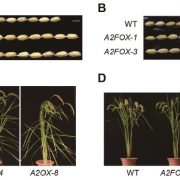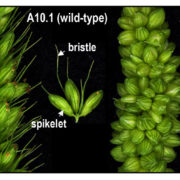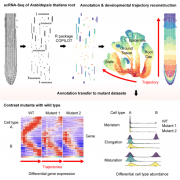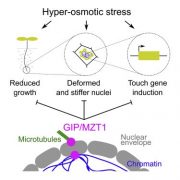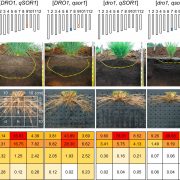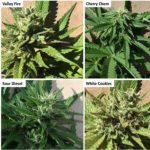Embryo protection after germination in date palm (Plant Cell)
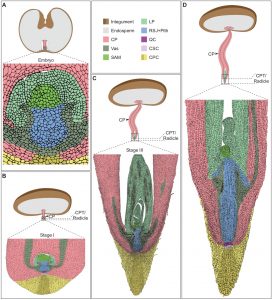 Plant morphogenesis is a dynamic process that can be modulated in response to environmental cues. In this work, Xiao et al. characterized germination and seedling development in date palm. After germination, the cotyledonary petiole grows, but the embryo development is paused. At early stages of development a low level of cell division in the embryo is observed, but cell division frequency increases at later stages. The early growth arrest in the embryo is correlated with high levels of abscisic acid (ABA); on the other hand, in the active tissues such as the cotyledonary petiole, low levels of ABA and high levels of gibberellic acid (GA) were detected. About three weeks after germination, embryo growth is resumed and its development continues inside the cotyledonary petiole that acts as a shield. The encapsulated seedling displays root and shoot features, for instance, accumulation of starch granules and transcripts of auxin response genes (i.e. PdIAA2) in the root tip, and, the expression of the SHOOT MERISTEMLESS ortholog gen (PdSTM) in the SAM. The authors also characterized the date palm root system architecture non-invasively using X-ray micro-computed tomography. Histochemical analysis of roots revealed accumulation of suberin and lignin, which are related to water loss prevention. Understanding these and other adaptations to extreme environments in the desert plants could aid crop improvement. (Summary by Humberto Herrera-Ubaldo) Plant Cell 10.1105/tpc.19.00008
Plant morphogenesis is a dynamic process that can be modulated in response to environmental cues. In this work, Xiao et al. characterized germination and seedling development in date palm. After germination, the cotyledonary petiole grows, but the embryo development is paused. At early stages of development a low level of cell division in the embryo is observed, but cell division frequency increases at later stages. The early growth arrest in the embryo is correlated with high levels of abscisic acid (ABA); on the other hand, in the active tissues such as the cotyledonary petiole, low levels of ABA and high levels of gibberellic acid (GA) were detected. About three weeks after germination, embryo growth is resumed and its development continues inside the cotyledonary petiole that acts as a shield. The encapsulated seedling displays root and shoot features, for instance, accumulation of starch granules and transcripts of auxin response genes (i.e. PdIAA2) in the root tip, and, the expression of the SHOOT MERISTEMLESS ortholog gen (PdSTM) in the SAM. The authors also characterized the date palm root system architecture non-invasively using X-ray micro-computed tomography. Histochemical analysis of roots revealed accumulation of suberin and lignin, which are related to water loss prevention. Understanding these and other adaptations to extreme environments in the desert plants could aid crop improvement. (Summary by Humberto Herrera-Ubaldo) Plant Cell 10.1105/tpc.19.00008


